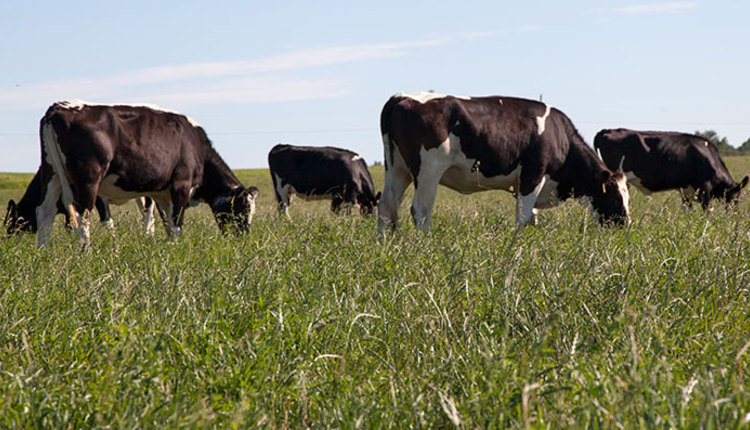Graze dairy heifers to control costs |
| By Michaela King |
|
|
 With the rising cost of raising and feeding dairy heifers in confinement, there has been more interest in putting young stock out to pasture. Rotational grazing can lower expenses, minimize labor for feeding and cleaning, and reduce the need for feeding equipment and housing during the grazing season, even if only a portion of your heifers are grazed. Along with cost and labor control, a well-managed rotational grazing system meets the necessary benchmarks for heifer growth. In an article recently published in Forage Focus by the Midwest Forage Association, researchers from the University of Wisconsin-Madison and the U.S. Dairy Forage Research Center report that with proper pasture management heifers grow between 1.8 to 2.2 pounds per day. Heifers can begin grazing at 4 to 6 months of age; however, the researchers note that younger heifers require higher quality forage and a higher degree of pasture management to maintain forage growth and quality. It is easier to graze older heifers with lower quality forage, but they also require higher feed intakes. A research project done at the University of Wisconsin’s Marshfield Agricultural Research Station compared orchardgrass and meadow fescue in a rotationally grazed system. The results showed slight differences in forage production, quality, and heifer growth for the different grass species. Overall, the amount of forage available for grazing was similar between the two grasses. Orchardgrass averaged 1,300 pounds of available forage dry matter (DM) per acre, while meadow fescue averaged 1,210 pounds of available forage DM. Across the three-year project, heifer growth was also similar between the grass species. The heifers grazing meadow fescue gained only 0.09 more pounds per day than those grazing orchardgrass. The biggest difference between orchardgrass and meadow fescue was forage quality. Compared to orchardgrass, meadow fescue had lower neutral detergent fiber (NDF [53.4 percent]), higher NDF digestibility (NDFD [65.4 percent]), and higher concentrations of crude protein (CP [15.4 percent]). Orchardgrass had a NDF of 56.4 percent, a NDFD of 61.8 percent, and a CP concentration of 12.8 percent. The researchers emphasized the importance of grazing grasses before seedhead development to ensure high forage quality. If possible, use a late-heading orchardgrass variety. Concluding, the researchers see grazing as a viable option to raise dairy heifers, allowing for reductions in the time spent on concrete while in confinement.  Michaela King Michaela King is serving as the 2019 Hay & Forage Grower editorial intern. She currently attends the University of Minnesota-Twin Cities and is majoring in professional journalism and photography. King grew up on a beef farm in Big Bend, Wis., where her 4-H experiences included showing both beef and dairy cattle. |
